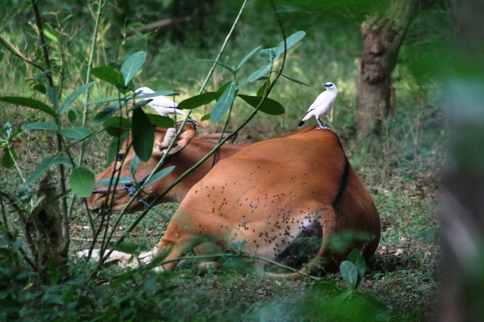Curious to know how half a Bali cow can save an endangered bird?
We want to increase the number of cows on the Balinese island of Nusa Penida, the home of our Bali Bird Sanctuary. El santuario, el único de su tipo en Indonesia, provides a haven from poachers and wildlife traders where we rehabilitate and release ex-captive endemic birds, including the Bali starling, one of the world’s most endangered birds.
Durante los últimos años hemos estado utilizando vacas de Bali para producir abono de alta calidad para el compost, que a su vez se utiliza para alimentar las plantas de semillero en nuestro vivero de reforestación. Estas plántulas se plantaron un día para restaurar parte de los bosques de Nusa Penida, y estos árboles eventualmente proporcionar alimento y refugio para las aves de la isla.
Using cow manure as compost is proving to be a great success, but we need more cows to keep this success going. We currently have two cows. One of our cows is pregnant for a second time, which gives us hope that this project can continue and grow for many years to come.
A donation of Rp 1,500,000 (approximately US$150) will buy half a cow. You can of course buy an entire cow instead. Anyone keen to make a contribution to this project can call Kirana on 0361 9777978 or email kiranagustina@gmail.com. If you can help us you will receive a special picture of your cow. You can also donate via our website.
An added bonus with this project is that the cows also bred and their calves can be sold to provide extra income to FNPF, to support our conservation projects on the Nusa Penida, and also to the farmers who have helped us raise them. We recently sold our first calf for Rp 4 million (US$400), with half the proceeds going to the farmer.
Please help us boost the cow population on Nusa Penida, which will help Indonesia’s native wildlife – including the Bali starling and Java sparrow – to flourish and survive. Indonesia tiene el número de la segunda más alta del mundo de las aves en peligro de extinción.








